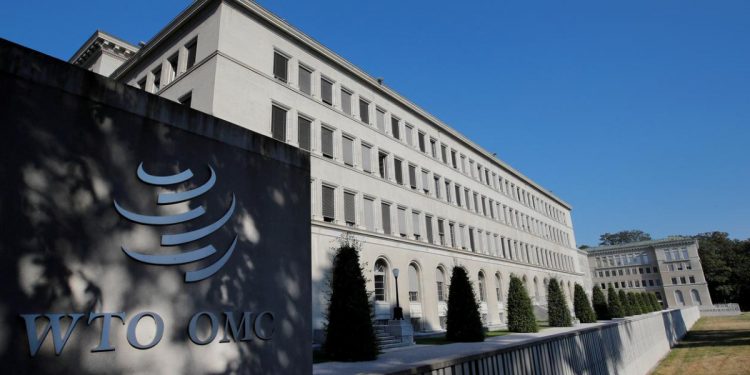Dasarathi Mishra
The World Trade Organisation (WTO), the first multi-lateral global organisation with rule enforcement rights saw the light of the day on 1 January 1995.
The WTO succeeded the General Agreement on Tariffs and Trade (GATT) which had regulated world trade since 1948. Over the past 25 years, the WTO has made a major contribution towards strengthening and stabilising the global economy, helping to boost trade, resolve numerous disputes and bringing forth developing countries into the trading system. The main objective of WTO is to ensure that trade flows smoothly, predictably and freely. Former Director General of WTO Roberto Azevedo recently made a significant statement: “Global trading system continues to face significant challenges. There is an urgent need to ease trade tensions, resolve systemic issues and further modernise rulebook. By doing so, we can ensure that the WTO continues to provide stability and predictability for trading nations large and small, thereby supporting growth, development and job creation around the world.”
At present, WTO has got 164 member countries that handle 98 per cent of world trade. Twenty-two countries are currently seeking accession as members. WTO is not just about opening markets, in some circumstances its rules support maintaining trade barriers – for example, to protect consumers and the environment or to prevent the spread of disease.
The General Agreement on Trade in Services (GATS) is a significant add-on to the WTO mechanism. GATS defines trade in services in terms of four types of transactions: Mode 1 – cross-border supply (a supplier in one WTO member provides services to a consumer in another member’s territory); Mode 2 – consumption abroad (a consumer from one member consumes services in another member’s territory); Mode 3 – commercial presence (a foreign company provides services through establishment in another member’s territory); and Mode 4 – presence of natural persons (individuals move to supply services in another member’s territory).
Importantly, world trade in services has been growing faster than trade in goods. Services trade grew 5.4 per cent annually on average from 2005 to 2017. Traditional statistics on trade in services do not cover all four modes of services supply, as defined by the GATS. However, a new WTO experimental dataset includes GATS mode 3 – commercial presence in another country – for the first time, thereby capturing the total value of services trade. Using these new estimates, trade in services was worth US$ 13.3 trillion in 2017. Distribution and financial services have emerged as the most traded services globally with each accounting for almost one-fifth of trade in services, while trade in computer services and research and development have recorded the most rapid average annual growth of above 10 per cent from 2005 to 2017. Some services, such as education, health or environmental services account for a negligible share of trade at present but are rising rapidly. Commercial presence accounted for 58.9 per cent of services trade in 2017, followed by cross-border services transactions, at close to 30 per cent. Commercial presence represents an even more important share of trade in finance and distribution sectors. However, increased digitisation is reshaping business models, opening more possibilities for cross-border supply in these sectors too. Developing economies have increased their share in services trade, albeit unevenly; the share of least-developed countries remains small, but has increased significantly since 2005.
Regional Trade Agreements (RTAs) are reciprocal preferential trade agreements between two or more trading partners, blocs. RTAs have risen in number and reach over the years. Non-discrimination and treating as Most Favoured Nation (MFN) among trading partners are the core principles of the WTO. But RTAs constitute one of the major exemptions. Trade is considered as engine of growth. Merchandise trade grew by 4.6 per cent in 2017, 3 per cent in 2018 and decreased to 2.6 per cent in 2019. The WTO has projected 9.2 per cent fall in volume of world merchandise trade in 2020 due to the pandemic followed by a 7.2 per cent rise in 2021.
Digitisation can accelerate economic growth through innovation. A few countries have embarked upon a new type of trade agreement which aims to create a framework for digital economy. These agreements specify that they co-exist with the parties’ rights and obligations contained in other international agreements such as the WTO agreements and RTAs. New trends are emerging. Australia and Singapore signed the Australia-Singapore Digital Economy Agreement in August, 2020. The World Trade Report 2020 mentions international cooperation can play a significant role in making the pursuit of digital development and technological innovation more effective.
India stands for multilateral, rule based system. During the 11th Ministerial Conference of WTO at Buenos Aires, India strongly expressed its stand on the fundamental principles of WTO which is a bedrock of rule-based multilateral trading system based on consensual decision-making buttressed by independent and credible dispute resolution process.
The writer is a former central banker.






































